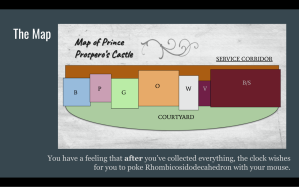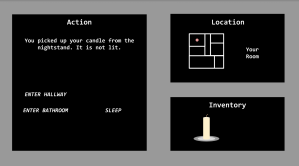Putting a Playful Spin on Literary Analysis
High school teachers can incorporate elements of gamification into assignments to encourage students to dig deeper into texts.
Your content has been saved!
Go to My Saved Content.Literary analysis and writing are foundational skills for students to learn in any level of an English language arts class. The issue that many high school teachers struggle with during writing instruction and literary analysis is creating rigorous, differentiated assessment methods that are also relevant and engaging to students. One exciting way to do this is to use the strategy of creating adventure games in order to teach and assess literary analysis and narrative writing.
Students create adventure games where players can choose their own adventure with stories and information that they have written from a narrative writing unit or from analyzing a text. This strategy encourages students not only to analyze texts and write but also to think critically about organizing and synthesizing their information into a functional format for gameplay.
Shape the Assignment’s Rigor Based on Student Needs
For this assignment, students are tasked with creating a choose-your-own-adventure game that reflects an aspect of instruction related to writing and text analysis. This strategy can be differentiated based on levels of rigor with different levels of students. One way to differentiate this assignment is to focus on a variety of elements from the texts. Teachers can determine which areas of text analysis are challenging for their students and focus on honing that skill.

For example, teachers could focus on one strategy (like summarizing a text) when designing their assessment. Teachers could combine multiple skills into one gaming activity if their students required a more rigorous focus. They could ask students to analyze the setting and plot in one gaming script. This would elevate the level of analysis needed for the game creation.
Another way to differentiate rigor in the assignment would be to require an extra writing assessment. For my Beowulf projects, students wrote a narrative and created an adventure game. If that’s too rigorous for students, teachers could change the assignment to have the adventure game be the narrative writing itself. Scaffolding is also crucial in the differentiation of this assignment.
If you have higher-level students, they may not need as much structure or scaffolding through the process. However, some students may need an extra level of structure when completing the assignment. Teachers can scaffold these students by creating outlines or templates for the students to fill in with their ideas. This provides students with a foundation to work with instead of creating everything on their own.
Students Can Use High- or Low-Tech Options to Create Their Game
This activity can be used with or without technology. Students can utilize technology by creating their games on presentation apps like Google Slides and include links that facilitate gameplay. Students can also use coding to create their own websites for their game. If technology is unavailable, students can always use paper for their games. Different gameplay scenarios can be created on paper cards. Students can also create their own board games for their adventures.
Using either technology or paper, students create this game to reflect their analysis of a text. In my own practice, students have created their games using Google Slides. The students created the game using hyperlinked slides that assisted the player with navigating through their story or game. Players clicked through the presentation and participated in different paths of play to explore the analysis of the text in a story format.
Games Can Analyze the Literary Features of the Assigned Stories
In my Honors English III STEM class, I used gamification in my Edgar Allan Poe stories as the basis for gamification. Students were challenged to create games that were a retelling of these famous stories. They chose from either “The Masque of the Red Death” or “The Tell-Tale Heart.” We read and analyzed these stories in class. After that analysis, the students were required to create games that analyzed plot and other literary elements of their chosen stories. Each game had to have a choose-your-own-adventure format so that the players of the game would be able to choose different paths of gameplay. Each linked option took the player through a different story line of the game.

There was an emphasis on creating a distinct setting in their games that connected to their chosen Poe story. They also were required to include detailed imagery and distinct characters from the story. One of my students focused on the imagery and setting of “The Masque of the Red Death” by creating a game where you clicked through the different rooms of the mansion in the story. Players would navigate through different scenarios by clicking on the symbolic rooms.
Another group used coding and hyperlinks to create a game where the player navigated through the house in “The Tell-Tale Heart” and collected items in each room.
Games Can Be Based on Students’ Original Narrative Stories
Another way I used gamification to enhance my instruction and assessment occurred during a unit on Heroes. In my English 4 College Prep class, we studied heroic archetypes using Beowulf as our anchor text. Students conducted research on a British time period, event, or famous person and created their hero based on that research.
The students then wrote a narrative story using their research and the hero they created. Students chose different topics like knights, Vikings, the Victorian era, and even Queen Elizabeth. Then they created a choose-your-own-adventure game based on their hero and story. The games were designed to follow different options for their hero’s story. Players chose different journeys for the hero, interactions with different characters, etc.
The students were able to pair up for this project; they could write similar stories with different characters and then create a game based on their characters. When the students finished their games, we invited students, administrators, and other teachers to come play their games. We also invited students in neighboring English classes to come play. We spent a class period dedicated to this event of gameplay. It was a great way to publicly showcase the students’ learning.
